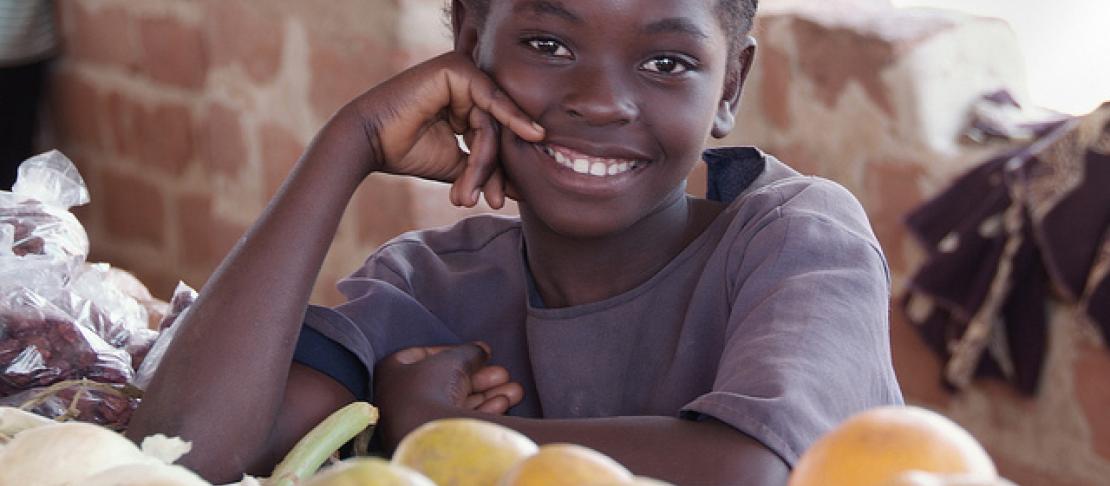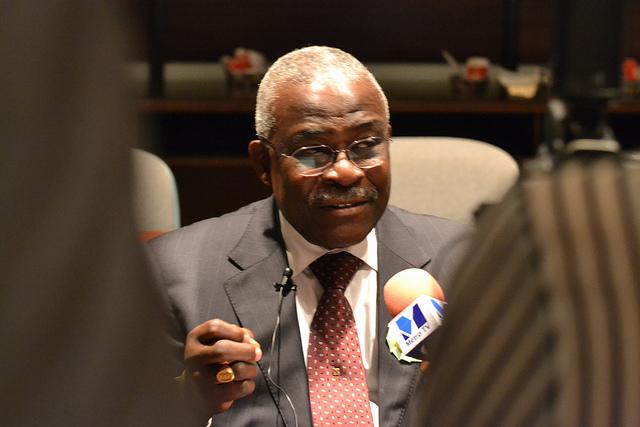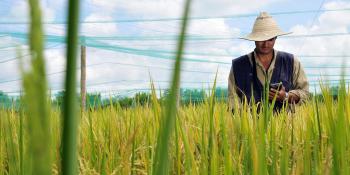Huge opportunities for African agriculture - but long road ahead

Many of today's young Africans grow up watching their parents sow and dig tirelessly on their farms, using tools that give you a backache just by looking at them.
With this in mind, can we really blame youngsters for not wanting to become smallholder farmers as adults?
Just like young people in other parts of the world, African youths want something better. They want something their parents didn’t have. This is why many head for cities in search of a better life where they don’t have to worry if the rains will come just in time to save the drying crops.
I can’t say that I blame youths for not wanting to continue in their parents' footsteps. I understand them. But if there is nobody there to pick up the hand hoe in the next generation, valuable key knowledge on farming might be lost forever.
Learn more: Youth and extension: key ingredients for an agricultural revolution
So how can we make agriculture attractive, both for the younger generation and the current farmers struggling to provide enough food under a changing climate?
To answer this question, we have to go back in time.
History always provide some answers
The situation wasn’t always this dire in Africa, said Kanayo F. Nwanze, President of the International Fund for Agricultural Development (IFAD) in his opening speech at the Africa Agriculture Science Week (AASW).

president of IFAD, Kanayo Nwanze at Africa Agriculture Science Week. Photo: C. Schubert View photos of President Kanayo Nwanze
Around thirty years ago, the agriculture sector was thriving on a positive development path with research, investments and agriculture innovations all coming together. Kanayo took the audience back to luscious tea plantations in East Africa, large cotton-fields in West Africa, green rice-fields producing more than enough for the growing population. Africa was taking the lead on food production and other regions such as Asia falling far behind.
So what happened to Africa’s agricultural development? Instead of moving forward, the continent’s agricultural production stagnated or declined during the past three decades.
The reasons are multifaceted but according to Kanayo it comes back to lack of investments, population growth, ill-fitted structural investment schemes and a decline in education institutions and quality.
Is it any wonder, that there is so much poverty and hunger on our continent? Kanayo asked. The resulting waste of so much human life and potential is not only tragic, it is a disgrace because there is simply no reason for it, Kanayo exclaimed during his opening speech.
But there are encouraging signs, he continued. The Comprehensive Africa Agriculture Development Programme (CCADP) focuses on improving and promoting agriculture across Africa. The Maputo Declaration on Agriculture and Food Security dedicates 10 percent of the national budget to agriculture development. The encouraging sign with these declarations is that they are Africa own and Africa led.
In addition, there are many opportunities for agriculture development in Africa today, Kanayo argued. The continent has the largest share of the world’s uncultivated land, with rain-fed crop potential. In other words, there room for agriculture to expand in a sustainable way to meet the growing demand.
Kanayo Nwanze talks youth in agriculture at Africa Agriculture Science Week:
The task ahead is complex
Kanayo explained that, since food prices are higher and more volatile than ever, and the world’s population is heading toward 9 billion, with much of that growth in Africa, we can’t continue to travel on the same road we were on three decades ago.
I would argue that our approach must be entirely different. We must reposition research and development so that it is research for development. This means measuring our results not by higher yields alone but by reduced poverty, improved nutrition, cohesive societies and healthy ecosystems, Kanayo continued.
Get more information about: Agricultural research for development - what are the next steps?
More investment and potential for smallholder farmers – better tools, markets, business opportunities, roads and general rural development – could make agriculture a more profitable and desirable occupation, for current and future farmers.
There is also a need to recognise that agriculture is at the same time a great opportunity for young people in Africa, to make a living and create a livelihood. A recent Working Paper by the World Bank emphasised that in order for this to happen, agriculture has to be profitable, competitive, and dynamic.
For Africa to pick up the pace and regain a leading role on agriculture development, it must recognise the farmers who toil to produce food. Until their countries catch up enough to provide them with the assistance they need, we have to make sure their voices are heard. We must also support young people who, despite farming's risky nature, are couragous enough to start producing our food.



